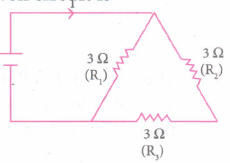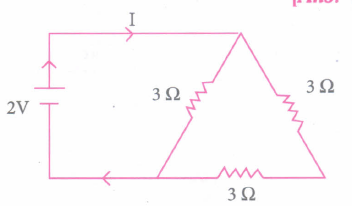- State Board
-
12th Standard
-

Biology
-

Computer Applications
-

Computer Science
-

Business Maths and Statistics
-

Commerce
-

Economics
-

Maths
-

Chemistry
-

Physics
-

Computer Technology
-

History
-

Accountancy
-

Tamil
-

Maths
-

Chemistry
-

Physics
-

Biology
-

Computer Science
-

Business Maths and Statistics
-

Economics
-

Commerce
-

Accountancy
-

History
-

Computer Applications
-

Computer Technology
-

English
12th Standard stateboard question papers & Study material
தமிழ் Subjects
English Subjects
-
-
11th Standard
-

Maths
-

Biology
-

உயிரியல் - தாவரவியல்
-

Economics
-

Physics
-

Chemistry
-

History
-

Business Maths and Statistics
-

Computer Science
-

Accountancy
-

Commerce
-

Computer Applications
-

Computer Technology
-

Tamil
-

Maths
-

Commerce
-

Economics
-

Biology
-

Business Maths and Statistics
-

Accountancy
-

Computer Science
-

Physics
-

Chemistry
-

Computer Applications
-

History
-

Computer Technology
-

Tamil
-

English
11th Standard stateboard question papers & Study material
தமிழ் Subjects
English Subjects
-
-
9th Standard
-

-

-

-

-

-

-

Maths
-

Science
-

Social Science
-

Maths
-

Science
-

Social Science
9th Standard stateboard question papers & Study material
தமிழ் Subjects
English Subjects
-
-
6th Standard
-

Maths
-

Science
-

Social Science
-

Maths
-

Science
-

Social Science
6th Standard stateboard question papers & Study material
தமிழ் Subjects
English Subjects
-
-
10th Standard
-

Maths
-

Science
-

Social Science
-

Tamil
-

Maths
-

Science
-

Social Science
-

English
-

English
10th Standard stateboard question papers & Study material
தமிழ் Subjects
English Subjects
-
-
7th Standard
-

Maths
-

Science
-

Maths
-

Science
-

Social Science
7th Standard stateboard question papers & Study material
தமிழ் Subjects
English Subjects
-
-
8th Standard
-

கணிதம் - old
-

Science
-

Social Science
-

கணிதம்
-

Maths
-

Science
-

Social Science
8th Standard stateboard question papers & Study material
தமிழ் Subjects
English Subjects
-
-
12th Standard
- CBSE Board
-
12th Standard CBSE
-

Biology
-

Chemistry
-

Physics
-

Maths
-

Accountancy
-

Business Studies
-

Economics
-

Introductory Micro and Macroeconomics
-

Computer Science
-

Geography
-

English
-

History
-

Indian Society
-

Physical Education
-

Sociology
-

Political Science
-

Engineering Graphics
-

Bio Technology
-

Entrepreneurship
-

Hindi Elective
-

Home Science
-

Legal Studies
-

Psychology
-

Hindi Core
-

Tamil
12th Standard CBSE Subject Question Paper & Study Material
-
-
11th Standard CBSE
-

Physics
-

Mathematics
-

Chemistry
-

Biology
-

Economics
-

Business Studies
-

Accountancy
-

Computer Science
-

English
-

Geography
-

History
-

Physical Education
-

Psychology
-

Sociology
-

Bio Technology
-

Enterprenership
-

Hindi
-

Home Science
-

Political Science
-

Applied Mathematics
11th Standard CBSE Subject Question Paper & Study Material
-
- 10th Standard CBSE
-
9th Standard CBSE
-

Social Science
-

Mathematics
-

Science
-

English
-

Hindi
9th Standard CBSE Subject Question Paper & Study Material
-
-
8th Standard CBSE
-

Social Science
-

Science
-

Mathematics
-

English
8th Standard CBSE Subject Question Paper & Study Material
-
-
7th Standard CBSE
-

Social Science
-

Science
-

Mathematics
-

English
7th Standard CBSE Subject Question Paper & Study Material
-
-
6th Standard CBSE
-

Social Science
-

Science
-

Mathematics
-

English
6th Standard CBSE Subject Question Paper & Study Material
-
-
12th Standard CBSE
- Free Online Test
- News
- Study Materials
-
Students
-

Stateboard Tamil Nadu
-

CBSE Board
-

Free Online Tests
-

Educational News
-

Scholarships
-

Entrance Exams India
-

Video Materials
Study Materials , News and Scholarships
-
-
Students

12th Standard Physics English Medium Free Online Test 1 mark questions 2020 - Part Two Question Bank Software Oct-12 , 2020
12th Standard Physics English Medium Free Online Test 1 mark questions 2020 Part Two
12th Standard Physics English Medium Free Online Test 1 mark questions part 2 2020
12th Standard
-
Reg.No. :
Physics
Time :
00:25:00 Hrs
Total Marks :
25
-
Which charge configuration produces a uniform electric field?
(a)point charge
(b)uniformly charged infinite line
(c)uniformly charged infinite plane
(d)uniformly charged spherical shell
-
What will happen if two conducting spheres are separately charged and then brought in contact?
(a)Total charge on the two spheres is conserved
(b)The total energy is conserved
(c)Both charge and energy are conserved
(d)The final potential is the mean of the original potentials.
-
In a parallel plate capacitor of capacitance C, a metal sheet is inserted between the plates, parallel to them. The thickness of the sheet is half of the separation between the plates. The capacitance now becomes
(a)2C
(b)\(\frac{C}{4}\)
(c)4C
(d)\(\frac{C}{2}\)
-
A charge q1 exerts force on charge q2. If another charge q3 is brought near, the force of q1, exerted on q2, will be
(a)decreased
(b)increased
(c)remains unchanged
(d)increased if q3 is of same sign as q1 and decreased if q2 is of opposite sign.
-
By using law of conservation of electric charge balance the following equations:
92U238 ⇾ 90Th234 +________.(a)2He4
(b)1H3
(c)1H2
(d)1H1
-
What is the value of resistance of the following resistor?
 (a)
(a)100 k Ω
(b)10 k Ω
(c)1 k Ω
(d)1000 k Ω
-
When 'n' resistors of equal resistance (R) are connected in series and in parallel respectively, then the ratio of their effective resistance is ______________
(a)1: n2
(b)n2: 1
(c)n: 1
(d)1: n
-
The current in the given circuit is __________________.
 (a)
(a)\(\cfrac { 1 }{ 8 } A\)
(b)\(\cfrac { 2 }{ 9 } A\)
(c)\(\cfrac { 2 }{ 9 } A\)
(d)\(1A\)
-
The value of current I in the network as shown is
 (a)
(a)\(\cfrac { 1 }{ 9 } A\)
(b)\(\cfrac { 2 }{ 9 } A\)
(c)\(\cfrac { 3 }{ 9 } A\)
(d)1A
-
The curve representing Ohm's law is a ________________.
(a)linear
(b)parabola
(c)hyperbola
(d)none of the above
-
A thin insulated wire forms a plane spiral of N = 100 tight turns carrying a current I = 8 m A (milli ampere). The radii of inside and outside turns are a = 50 mm and b = 100 mm respectively. The magnetic induction at the centre of the spiral is ______.
(a)\(5\mu T\)
(b)\(7\mu T\)
(c)\(8\mu T\)
(d)\(10\mu T\)
-
An electron of mass 0.90 x 10-30kg under the action of a magnetic field moves in a circle of 2cm radius at a speed of 3 x 106 m/s if a proton of mass 1.8 x 10-27 kg was to move in a circle of the same radius in the same magnetic field, then its speed will be _______________.
(a)3.0 x 106 m/s
(b)1.5 x 103 m/s
(c)6.0 x 104 m/s
(d)cannot be estimated from the same data
-
The flux linked with a coil at any instant t is given by \(\Phi\)B = 10t2 − 50t + 250. The induced emf at t = 3s is
(a)−190 V
(b)−10 V
(c)10 V
(d)190 V
-
In Fleming's right hand rule, the forefinger represents the direction of ____________.
(a)motion of the conductor
(b)magnetic field
(c)induced current
(d)induced emf
-
The phase difference between VL and Vc is _________________
(a)2π
(b)π/2
(c)π/4
(d)π
-
The electric and the magnetic fields, associated with an electromagnetic wave, propagating along negative X axis can be represented by _____.
(a)\(\vec { E } ={ E }_{ 0 }\hat { i } \) and \(\vec { B } ={ B }_{ 0 }\hat { k } \)
(b)\(\vec { E } ={ E }_{ 0 }\hat { k } \) and \(\vec { B } ={ B }_{ 0 }\hat { j } \)
(c)\(\vec { E } ={ E }_{ 0 }\hat { i } \) and \(\vec { B } ={ B }_{ 0 }\hat { j } \)
(d)\(\vec { E } ={ E }_{ 0 }\hat { j } \) and \(\vec { B } ={ B }_{ 0 }\hat { i } \)
-
Which EM waves are used in medicine to destroy cancer cells?
(a)radio waves
(b)IR
(c)૪ rays
(d)UV rays
-
Which one of the following groups of electromagnetic waves is in order of increasing frequency?
(a)Microwaves U-V rays, X-rays
(b)Radio waves, visible light and 1-R rays
(c)gamma rays U-V rays radio waves
(d)gamma rays, U-V rays radio waves
-
If the velocity and wavelength of light in air is Va and λa and that in water is Vw and λw, then the refractive index of water is______.
(a)\(\frac{V_W}{V_a}\)
(b)\(\frac{V_a}{V_W}\)
(c)\(\frac{\lambda_W}{\lambda_a}\)
(d)\(\frac{{V_a}\lambda_a}{{V_W}\lambda_W}\)
-
Photons of wavelength λ are incident on a metal. The most energetic electrons ejected from the metal are bent into a circular arc of radius R by a perpendicular magnetic field having magnitude B. The work function of the metal is _____.
(a)\(\frac { hc }{ \lambda } -{ m }_{ e }+\frac { e^{ 2 }{ B }^{ 2 }{ R }^{ 2 } }{ { 2m }_{ e } } \)
(b)\(\frac { hc }{ \lambda } +{ 2m }_{ e }{ \left[ \frac { eBR }{ { 2m }_{ e } } \right] }^{ 2 }\)
(c)\(\\ \frac { hc }{ \lambda } -{ m }_{ e }{ c }^{ 2 }-\frac { e^{ 2 }{ B }^{ 2 }{ R }^{ 2 } }{ { 2m }_{ e } } \)
(d)\(\frac { hc }{ \lambda } -{ 2m }_{ e }{ \left[ \frac { eBR }{ { 2m }_{ e } } \right] }^{ 2 }\)
-
Sodium and copper have work functions of 2.3eV and 4.5eV respectively, then the ratio of the wavelengths is nearest to ___________.
(a)1: 2
(b)4: 1
(c)2: 1
(d)1: 4
-
The minimum potential given to the anode for which the photoelectric current becomes zero is called _______ potential.
(a)cut-off
(b)threshold
(c)saturation
(d)active
-
A radiative element has N0 number of nuclei at t = 0. The number of nuclei remaining after half of a half-life _____.(that is, at time t = \(\frac{1}{2}T_\frac{1}{2}\))
(a)\(\frac{N_0}{2}\)
(b)\(\frac{N_0}{\sqrt2}\)
(c)\(\frac{N_0}{4}\)
(d)\(\frac{N_0}{8}\)
-
Which one of the following represents forward bias diode?
(a)(b)(c)(d) -
“Sky wax” is an application of nano product in the field of _____.
(a)Medicine
(b)Textile
(c)Sports
(d)Automotive industry
Answer all the questions
25 x 1 = 25






 12th Standard Physics Syllabus
12th Standard Physics Syllabus  12th Standard Physics Study Materials
12th Standard Physics Study Materials 12th Standard Physics MCQ Practise Tests
12th Standard Physics MCQ Practise Tests 

Reviews & Comments about 12th Standard Physics English Medium Free Online Test 1 mark questions 2020 - Part Two
Write your Comment